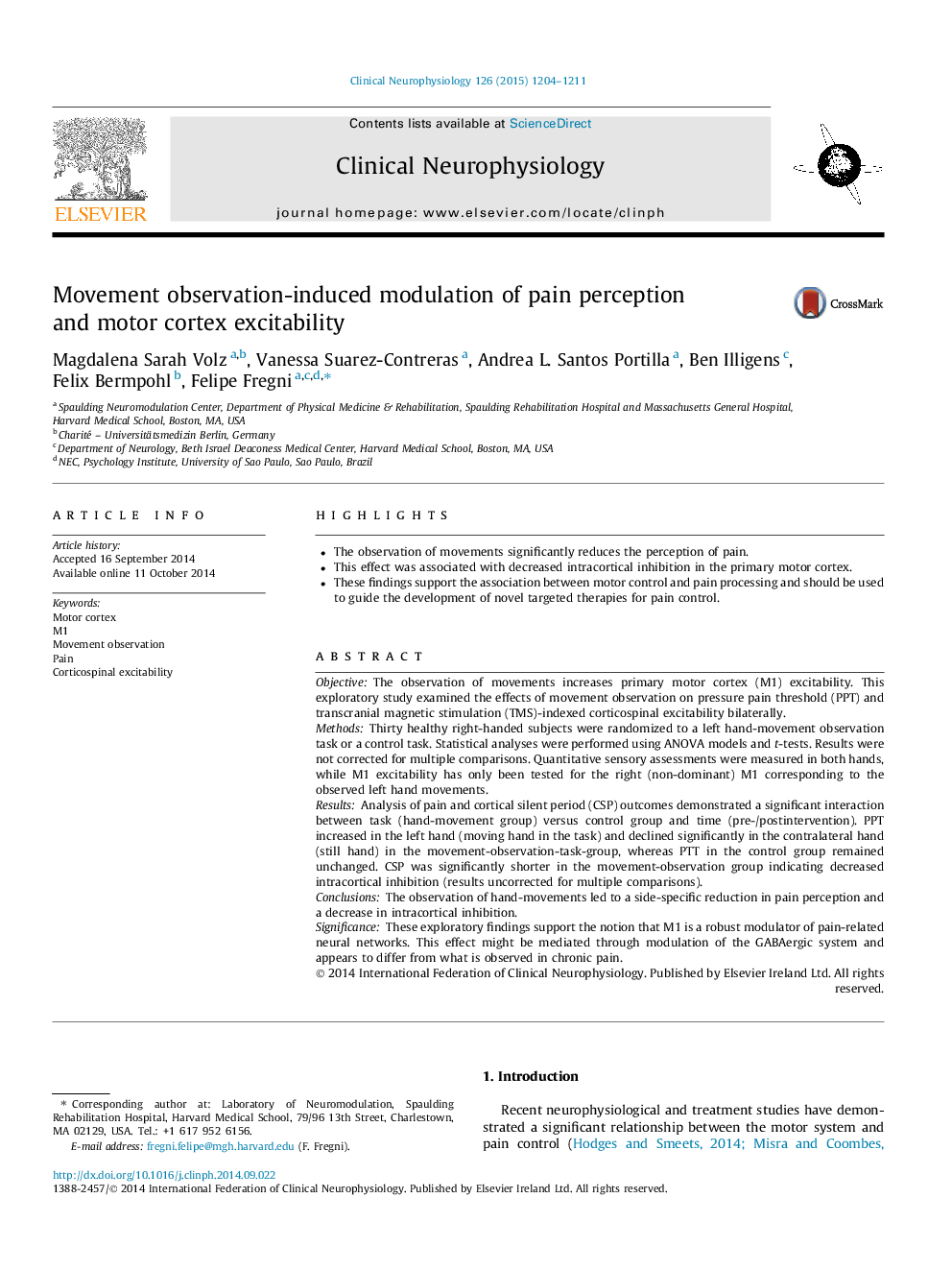| Article ID | Journal | Published Year | Pages | File Type |
|---|---|---|---|---|
| 6008024 | Clinical Neurophysiology | 2015 | 8 Pages |
â¢The observation of movements significantly reduces the perception of pain.â¢This effect was associated with decreased intracortical inhibition in the primary motor cortex.â¢These findings support the association between motor control and pain processing and should be used to guide the development of novel targeted therapies for pain control.
ObjectiveThe observation of movements increases primary motor cortex (M1) excitability. This exploratory study examined the effects of movement observation on pressure pain threshold (PPT) and transcranial magnetic stimulation (TMS)-indexed corticospinal excitability bilaterally.MethodsThirty healthy right-handed subjects were randomized to a left hand-movement observation task or a control task. Statistical analyses were performed using ANOVA models and t-tests. Results were not corrected for multiple comparisons. Quantitative sensory assessments were measured in both hands, while M1 excitability has only been tested for the right (non-dominant) M1 corresponding to the observed left hand movements.ResultsAnalysis of pain and cortical silent period (CSP) outcomes demonstrated a significant interaction between task (hand-movement group) versus control group and time (pre-/postintervention). PPT increased in the left hand (moving hand in the task) and declined significantly in the contralateral hand (still hand) in the movement-observation-task-group, whereas PTT in the control group remained unchanged. CSP was significantly shorter in the movement-observation group indicating decreased intracortical inhibition (results uncorrected for multiple comparisons).ConclusionsThe observation of hand-movements led to a side-specific reduction in pain perception and a decrease in intracortical inhibition.SignificanceThese exploratory findings support the notion that M1 is a robust modulator of pain-related neural networks. This effect might be mediated through modulation of the GABAergic system and appears to differ from what is observed in chronic pain.
